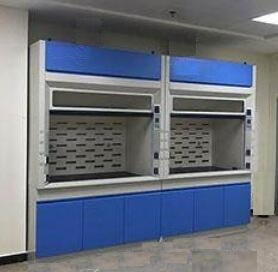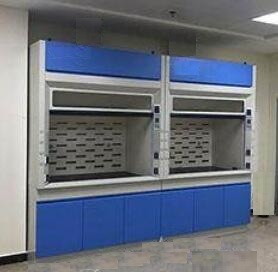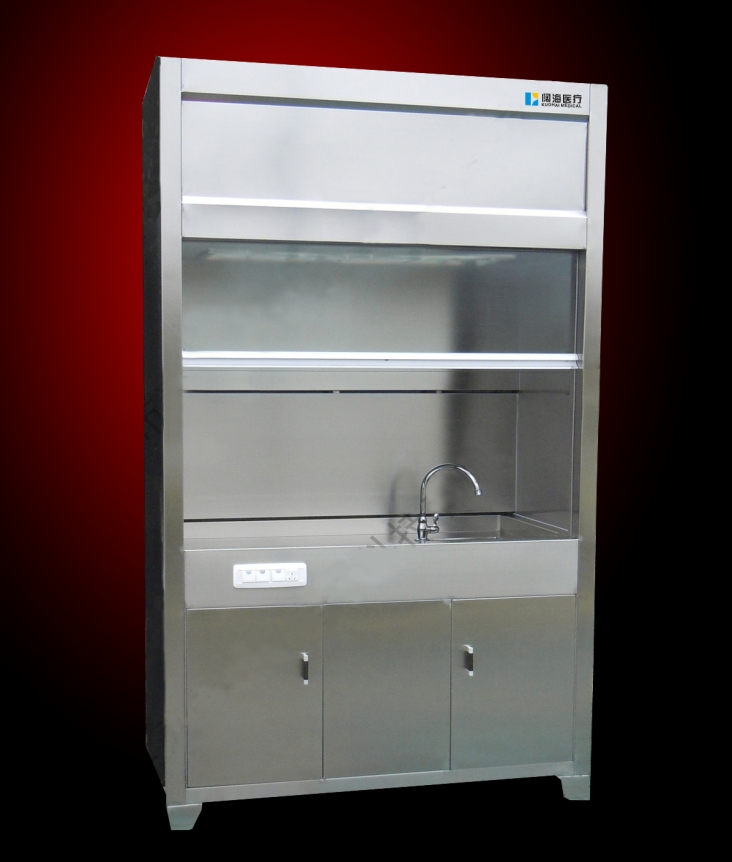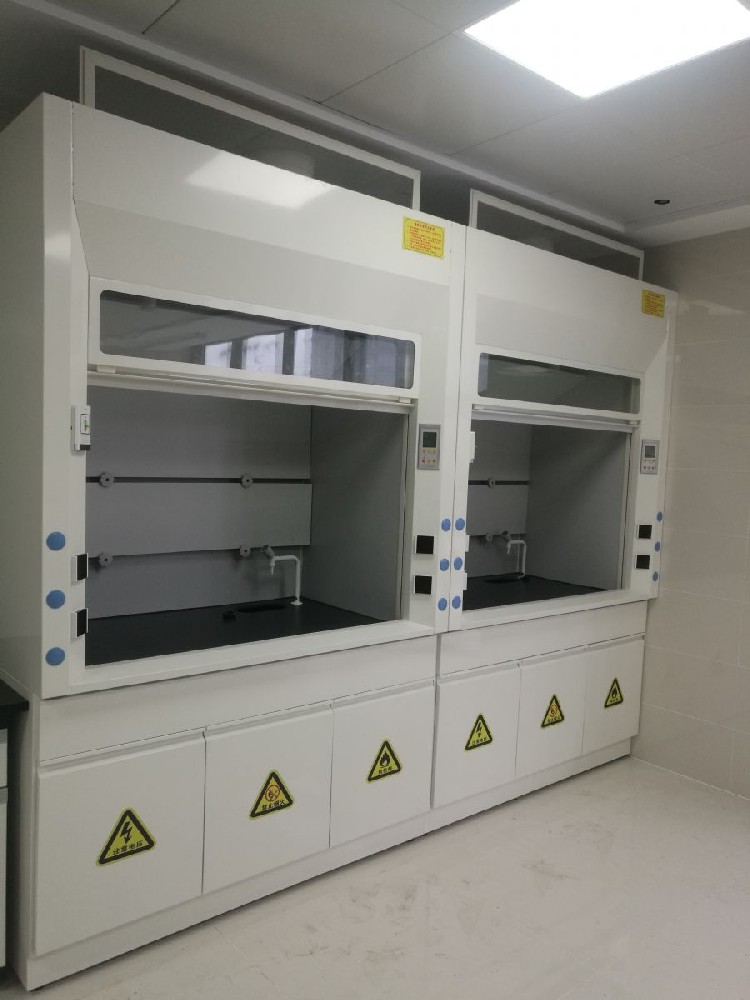
KH-GTG ventilation cabinet
1. The main dimensions of the fume hood are 1200mm, 1500mm, 1800mm in width, and 2350mm in height. The main structure of the fume hood is:
① Cabinet: The cabinet of the ventilation cabinet can be made of materials such as steel, wood, PP, PVC, stainless steel, etc. according to usage requirements;
② Table top: Various materials that are corrosion-resistant, acid alkali resistant, and high-temperature resistant (according to different experimental requirements, solid core physicochemical board, epoxy resin board, or ceramic board can be selected first). High temperature or strong acid alkali operation can be carried out;
③ Sliding door: Transparent tempered glass installed on the surface of the cabinet to keep users away from harmful chemicals and gases, while allowing harmful gases to enter the internal ducts of the fume hood;
④ Deflector plate: controls the shape of the airflow flowing through the fume hood, reduces the backflow or eddy current caused by the uncertain way the air flows into the fume hood, and improves the efficiency of use (which will have an impact on noise and static pressure);
⑤ Collecting ring: located at the top of the fume hood, it guides the gas from the fume hood to the wind for emission (which has a significant impact on the efficiency and noise of the fume hood);
⑥ Air regulating valve: an accessory component of a fume hood, used to regulate the exhaust volume and optimal surface wind speed of the fume hood;
⑦ Accessories such as faucets, cocks, and water cups.
2. The characteristics of axial flow fans are: low power consumption, low operating costs, but high noise, low fan suction (low wind pressure), suitable for simple systems, generally installed on walls or pipelines;
② The characteristics of centrifugal fans are: high power consumption, high operating costs, high noise, and high suction force (high wind pressure). They are suitable for complex systems and are mainly installed outdoors or on rooftops; For ventilation systems with requirements, frequency converters and related precision control instruments can be installed to meet different experimental and usage requirements, as well as environmental and energy-saving purposes.
③ The characteristics of diagonal flow fans are: power consumption, operating costs, and fan suction between the first two, with low noise. They are suitable for simple systems and are generally installed indoors.








 鄂公网安备42090202000178号
鄂公网安备42090202000178号